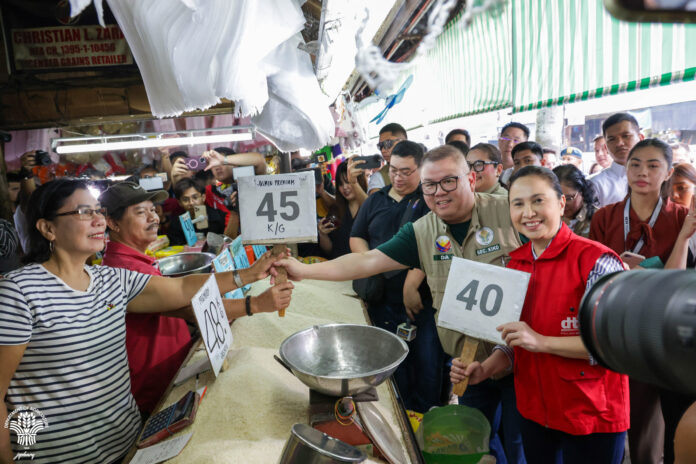Agriculture Secretary Francisco P. Tiu Laurel Jr. told Congress on Wednesday that the Department of Agriculture (DA) has recommended to the Tariff Commission that any future increase in the rice import duty—from the current 15 percent back to the previous 35 percent—be implemented gradually and timed strategically to minimize its impact on both local and global markets.
“Our suggestion is a gradual increase…eventually returning to the 35 percent duty,” Secretary Tiu Laurel testified before the House of Representatives’ Murang Pagkain Super Committee, chaired by Albay Rep. Joey Salceda.
The DA chief warned that an abrupt 20-percentage-point hike could disrupt the rice market and undermine government efforts to stabilize prices since last year. “A sudden increase could shock not only the local market but also ripple across the global rice trade,” he noted.
As one of the world’s major rice importers, the Philippines plays a significant role in global rice pricing due to its demand-supply as well as regulatory dynamics.
The decision of President Ferdinand Marcos Jr. to reduce the rice tariff to 15 percent in July triggered a series of DA initiatives, including the introduction of a maximum suggested retail price (MSRP) on 5 percent broken imported rice. These measures brought down rice prices and contributed to significantly slow down inflation.
“To minimize the impact on the local market, we propose timing the tariff hike to coincide with the harvest seasons of our major suppliers—around late September for Vietnam and December for Pakistan,” Tiu Laurel explained.
Vietnam remains the Philippines’ largest rice supplier, although President Marcos has directed efforts to diversify sources—including India and Pakistan—to ensure more stable and affordable imports.
While global rice prices remain lower than last year, they have recently begun to rise again, a trend analysts view as a market correction. Even so, the DA still plans to lower the MSRP on imported rice by P2 per kilo, reducing it to P43 starting July 1.
Since the MSRP was introduced in January, it has been reduced several times from the original P58 per kilo, in response to declining global prices and the reduced tariff.
Nueva Ecija Rep. Rossana Vergara also pushed for higher tariffs, warning that unchecked rice imports are harming local farmers. The tariff proposal comes amid heightened scrutiny of the Rice Tariffication Law, initially enacted in 2019 and amended in 2024. While the law liberalized rice imports, it also earmarked tariff revenues for the Rice Competitiveness Enhancement Fund (RCEF), which will increase its annual allocation from P10 billion to P30 billion under the revised legislation.
The current 15 percent tariff, a temporary measure implemented by President Marcos last July in response to El Niño and India’s rice export ban, remains under review.







